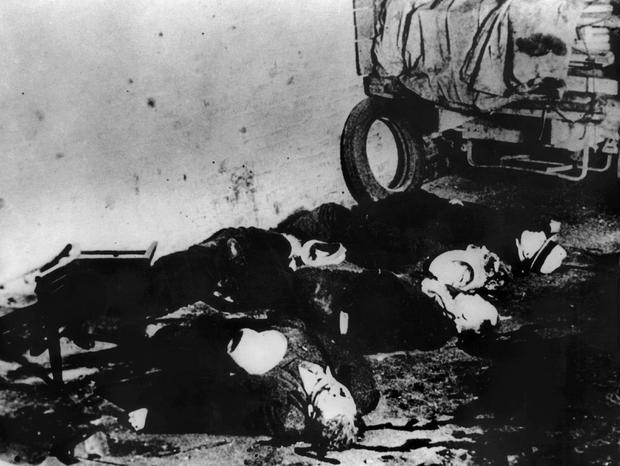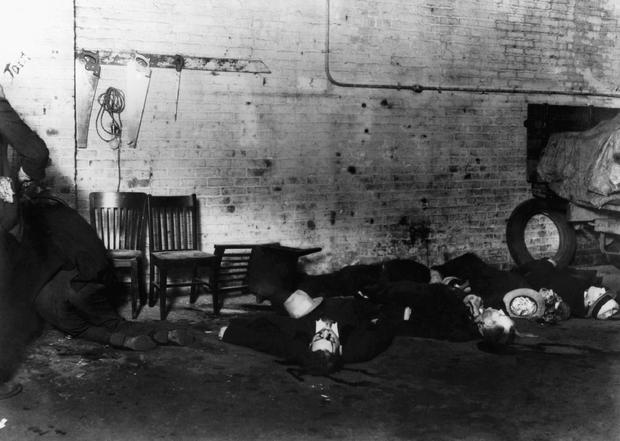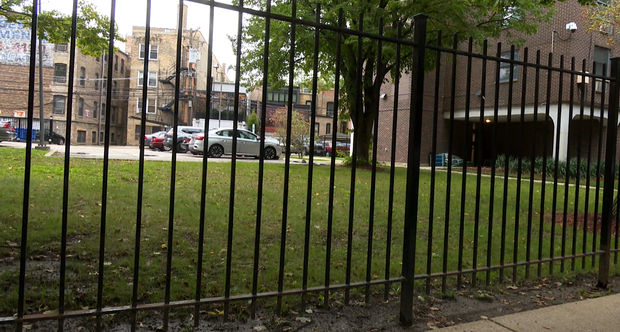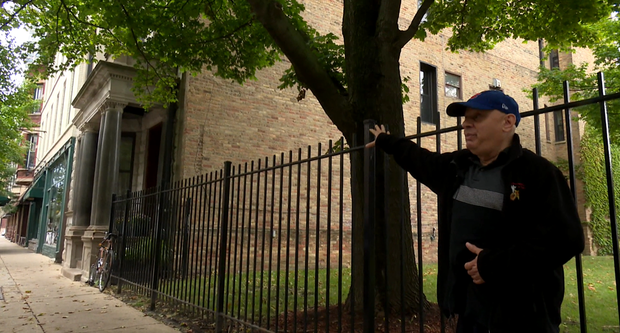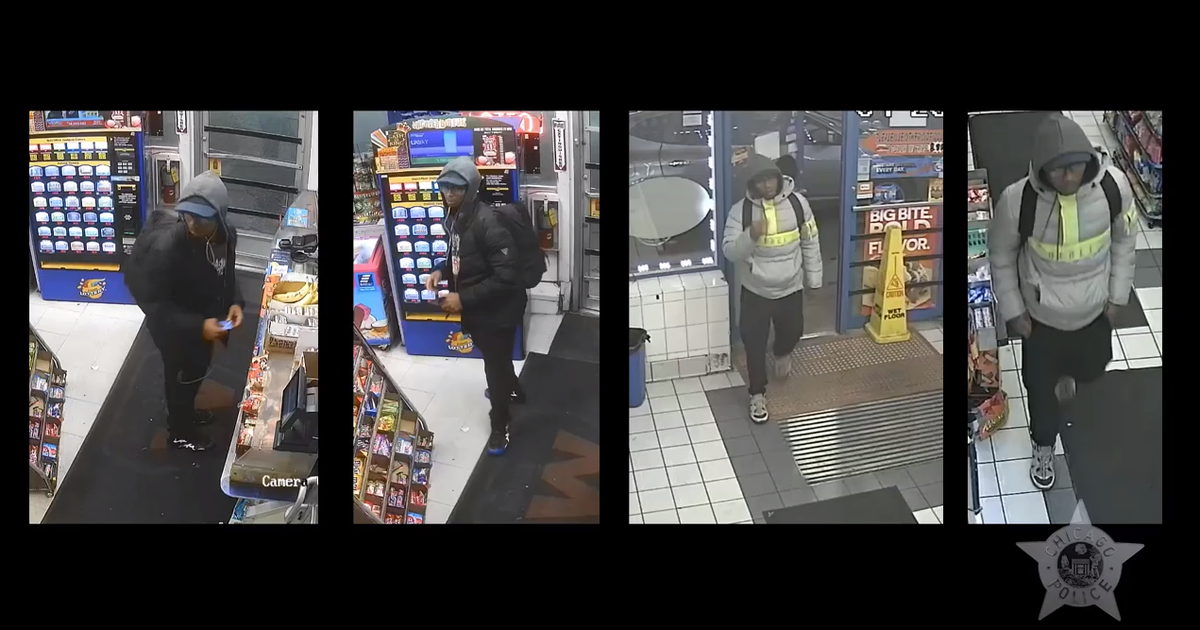Chicago Hauntings: Cursed Bricks, Noises, And Poltergeists Follow The Never-Prosecuted St. Valentine's Day Massacre
CHICAGO (CBS) -- Do only fuzzy romantic feelings come to mind when you think of Valentine's Day? How about if we call it St. Valentine's Day?
Throughout Prohibition in the 1920s, there were many beer and alcohol wars between rival gangs of organized criminals. Many of the men in charge of the gangs never ended up being prosecuted by federal authorities, because they did away with each other.
It all came to a head in Chicago's Lincoln Park neighborhood on the morning of Feb. 14, 1929.
As Troy Taylor's historical essay "Blood, Roses and Valentines" recalls, the events that led up to the massacre started in 1924 with murder of gang leader Dion O'Banion, who was the chief competition to Chicago Outfit leader Johnny Torrio in the bootleg liquor business. O'Banion controlled the North Side operation, Torrio the South Side.
After a brewery acquisition deal between the two men went bad, Torrio ordered a hit on O'Banion. The North Side gang vowed revenge, and a five-year war between the two gangs began.
Torrio himself was later shot and seriously wounded. While he would survive his wounds and live to the age of 75, he decided to give up control of the Outfit to Al Capone.
Capone's gang went on to take out O'Banion ally Hymie Weiss, leaving the North Side bootlegging operation in the hands of George "Bugs" Moran, a bitter enemy of Capone's whom he wanted nothing more than to take out, Taylor recounted.
Early in 1929, Moran and a henchman killed Pasquillano Lolordo, a Capone associate, and Capone decided to have Moran done away with once and for all, Taylor recounted.
Capone arranged to have someone contact Moran and tell him a special shipment of bootleg whiskey from Canada would be shipped to a garage Moran owned at 2122 N. Clark St. When a group of Moran's associates arrived at the garage, four Capone associates stormed in – two of them in civilian clothes, and two of them posing as police officers conducting a raid and even arriving in a Chicago Police car.
They lined up six members of Moran's gang against the north wall of the garage - Adam Heyer, Frank and Pete Gusenberg, John May, Al Weinshank, and Albert Kachellek alias James Clark. Also made to line up was a seventh unaffiliated man named Reinhardt Schwimmer – a 29-year-old optometrist who apparently just loved hanging out with gangsters. The assailants took out machine guns from their overcoats, and opened fire, according to the Encyclopedia of Chicago.
But Moran himself was not present, and thus survived. And Capone was in Florida at the time, and law enforcement could never link him to the crime, the encyclopedia said. No one was ever tried in the killings.
Tony Szabelski of Chicago Hauntings Ghost Tours notes that the men who were shot dead in the garage were not found for about three hours after the shooting. You would think the machine guns must have made a lot of noise, and people in the neighborhood must have heard it – which they did. But that decoy police car suggested to neighbors that the police were there and had the whole situation under control, as did a little stunt after the massacre.
The two men dressed as police officers handcuffed their accomplices who had arrived in civilian clothes and threw them in the back of that police car. The police car sped off with the lights and sirens on, and everyone was fooled.
It was all because of a dog that the victims were finally found three hours later. John May, the mechanic for Moran's gang and a former safecracker, had brought his German shepherd, named Highball, to the garage that morning.
Highball was not harmed at all, having been tied to a truck toward the back of the garage. The woman who lived in the apartment building heard the dog barking and wondered why no one was comforting the poor dog. But she was afraid to go into the garage herself, so she got a male neighbor and they entered together.
One can only imagine the horror they saw when they entered. The man ran out screaming there were dead people everywhere.
The garage where the massacre happened, which was marked "SMC Cartage Company," was demolished in 1967. A side yard for the Margaret Day Blake apartments, a Chicago Housing Authority seniors' development, now occupies the land.
When the garage came down, the bricks from the building became collector's items, Szabelski said. This was especially the case if they had blood on them, or bullet holes in them. But then, a lot of stories started coming out that people were experiencing weird things after they got the bricks.
Some reported they were being haunted. Some were getting in terrible accidents or getting horrific diseases. So people started to think the bricks were cursed.
Spraying all the bricks with holy water probably wasn't a convenient option. So a Canadian businessman had the next best idea. Why not pee on them?
As multiple sources point out, Canadian businessman George Patey bought the bricks at auction. Chicago Detours points out that Patey first took the bricks on tour with stops at galleries and shopping malls and also tried to open a crime museum in 1969, but it was not a success.
Finally, Patey reassembled the garage bricks in the men's room of his Banjo Palace nightclub in Vancouver, British Columbia. With the addition of a plastic screen set up in front of them, the reassembled bricks became a urinal wall, with conveniently placed targets where men were supposed to aim their urine.
Women were allowed into the men's room to see the wall.
If reading this story gave you a notion to take a trip to Vancouver and visit the Banjo Palace and use their men's room, we regret you inform you that you can't anymore. You're 45 years too late. The Banjo Palace closed in 1976, and afterward, the wall was auctioned off again, one brick at a time.
Some of the bricks were reassembled the new Las Vegas Mob Museum. A total of 300 bricks are now on display there. In the museum, they report hearing the sound of gunshots and men moaning and falling to the ground.
Back on Clark Street in Lincoln Park, similar noises are heard. There are also reports that dogs tend to react going by the warehouse site – possibly picking up on the energy of that German shepherd that was found after the massacre.
In old images from the massacre site, you'll see the neighboring four-story graystone at 2120 N. Clark St. with its ornate architecture and distinctive entryway columns. That building is still there, and Szabelski reports the owner has told him a lot of poltergeist activity takes place inside – things flying off counters and falling off shelves.
Many believe there is still a very heavy psychic imprint over the land where the massacre happened. Seven men were brutally gunned down, and the murders remain unavenged.
And Szabelski reports the land will remain a yard for the Margaret Day Blake apartments. It's located on prime real estate in Lincoln Park, but Szabelski says the city has decided nothing will ever be built there again. Ever.
Video produced by Blake Tyson. Written story by Adam Harrington.

